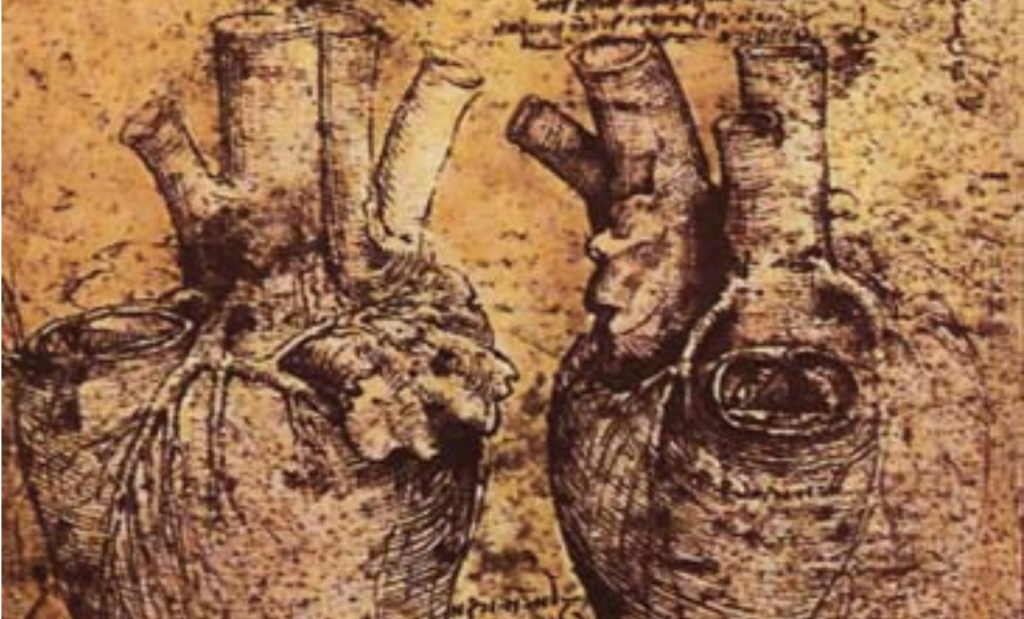
AI finally explains the science behind DaVinci’s heart drawings. (Source: Wikimedia Commons)
AI Solves Mystery in Exploring Heart’s Trabeculae, Drawn by Da Vinci
Last year in September was the 500th anniversary of the death of the man and genius that was Leonardo da Vinci. Da Vinci could be considered the computer of his day. Besides gaining fame for the paintings of Mona Lisa and his interpretation of The Last Supper, the artist was an engineer who imagined everything from parachutes to robot tanks. But Da Vinci also held a fascination for the human body, and in particular the human heart.
One particular feature of the human heart has had scientists scratching their heads ever since renaissance artist Leonardo da Vinci first began sketching it around 500 years ago.
The intricate mesh-like network of fibers that line the inner surface of the heart, known as “trabeculae,” have puzzled artists and scientists, who never figured out their purpose—until now.
In a story on the China Global Television Network, newseu.cgtn.com, writer Thomas Wintle explains how Da Vinci drew the trabeculae, a group of mesh-like veins on the inside of the heart. Now, thanks to AI, researchers understand for the first time the crucial role that the minuscule muscles play in the heart: they enhance the efficiency of blood flow through the organ.
Da Vinci, was one of the first Europeans to closely analyze the muscles and attempt to make sense of them through illustration:
“He looked at these branching fibers inside the heart, what they were for, and he realized that they had a really high surface area,” according to Declan O’Regan, a clinical scientist at the Medical Research Council (MRC) London Institute of Medical Sciences, this discovery could be used to help combat and find new treatments for heart disease, one of the leading causes of death worldwide.
O’Regan’s team was able to discover the true purpose of the heart strands by employing AI to analyze 25,000 MRI heart scans taken from the UK Biobank study, a health resource for medical researchers. Despite Da Vinci broaching the topic half a millennium ago, technological limits meant that scientists were unable to confirm the function of trabeculae previously.
“It’s really only until recently where we’ve had MRI scans that are able to show these really quite delicate fibers in enough detail, coupled with the machine learning analysis in really large populations,” says O’Regan.
He points out the difficulty of analyzing some 25,000 samples by hand, whereas computer vision techniques made processing the huge number of scans much easier.
The next possibility is to move this technology to the brain and understand the similar surfaces that the heart and brain share in their operations.
O’Regan says the way that nerve cells branch out in the brain also has the fractal patterns seen in the heart, and therefore the effect of certain genes could be important to brain development.
“We know that there are diseases that have this sort of link between brain development and heart development,” says the scientist: “so this could be an intriguing link between the same genes that control branching patterns in muscle cells and the nerve cells.”
We may have Da Vinci and AI to thank for the next advancement in the care of heart and brain maladies that have plagued people forever.
read more at newseu.cgtn.com







Leave A Comment